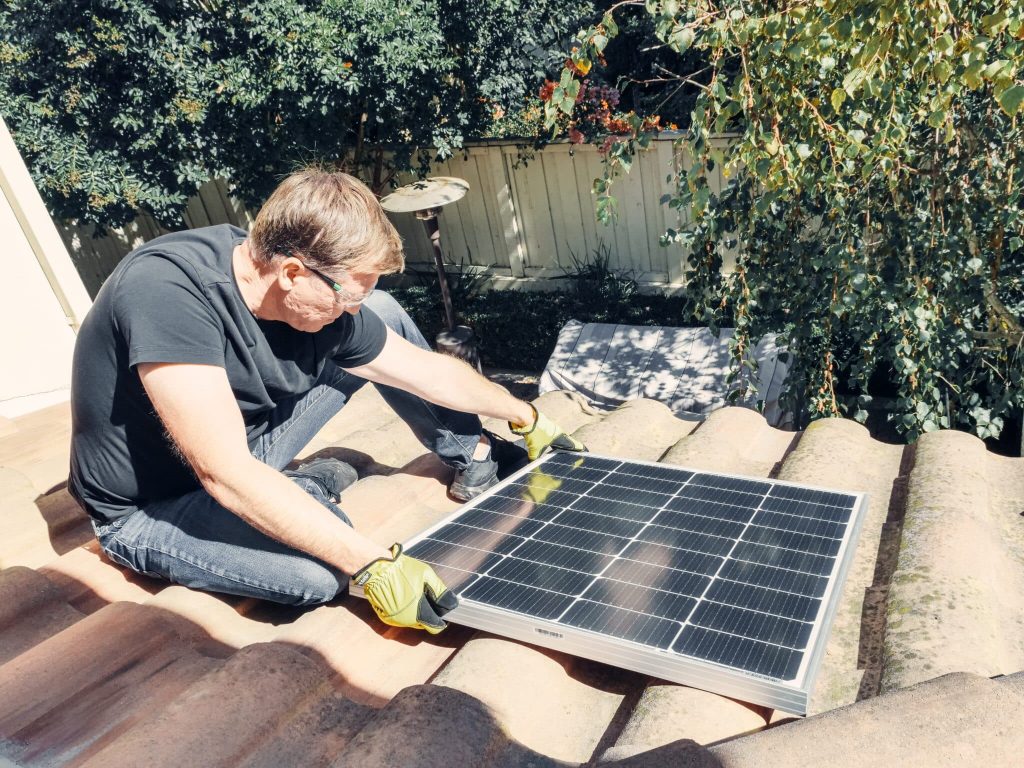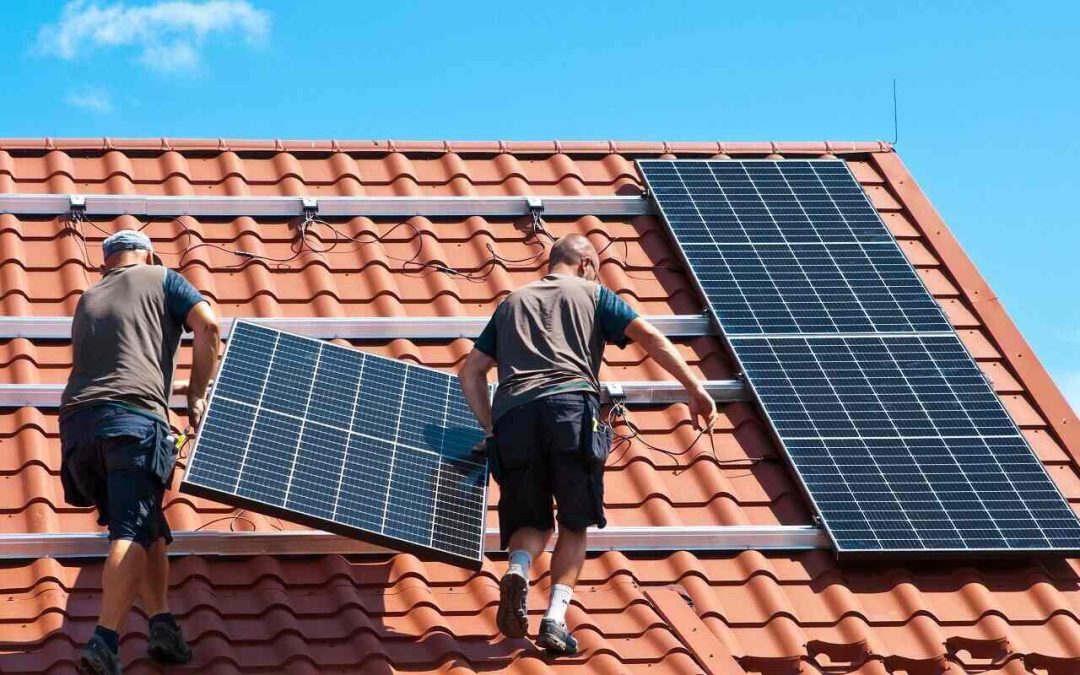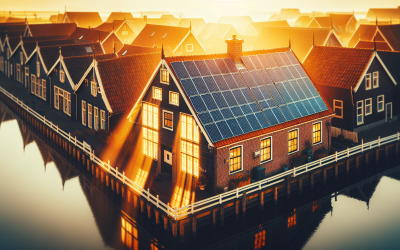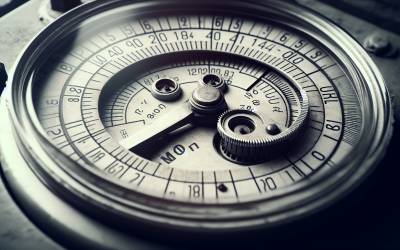So, you’re thinking about going green and harnessing the power of the sun to generate electricity for your home. The big question on your mind is whether you can tackle the installation of solar panels on your own. Well, the answer isn’t as simple as a yes or no. While there are definitely some knowledgeable homeowners who have successfully taken on this DIY project, there are a few important factors to consider before plunging into the world of solar installation. Let’s take a closer look at whether you’ve got what it takes to DIY your solar panel installation. Many homeowners are considering DIY solar panel installation as a way to save money and have more control over their energy production. While there are benefits to taking on this project yourself, there are also important considerations to keep in mind before embarking on this endeavor. In this article, we will explore the benefits of DIY solar panel installation, the necessary considerations beforehand, the steps involved in the installation process, the tools and equipment required, potential challenges and limitations, alternatives to DIY installation, financial considerations, safety guidelines, and additional resources and support available for DIY installers.
Benefits of DIY Solar Panel Installation
Cost Savings
One of the primary reasons homeowners choose to install their own solar panels is to save money. By cutting out the labor costs associated with hiring a professional installer, you can significantly reduce the overall expenses. Additionally, you have the flexibility to choose and purchase the equipment at a price point that aligns with your budget.
Customization
DIY solar panel installation allows you to customize your system according to your specific energy needs and preferences. You can select the type and number of solar panels, design the layout, and choose the most suitable equipment for your unique situation. This level of customization ensures that your solar system is tailored to meet your energy requirements effectively.
Learning Experience
Embarking on a DIY solar panel installation journey provides an excellent opportunity to learn about renewable energy systems, electrical connections, and the overall process of harnessing solar power. The knowledge gained through this experience can be valuable for future DIY projects and can help you better understand how to maintain and troubleshoot your solar system.
Satisfaction of Accomplishment
Completing a DIY solar panel installation can bring a great sense of accomplishment and pride. Knowing that you have built and installed a system that generates renewable energy and reduces your carbon footprint can be incredibly fulfilling. It also allows you to take charge of your energy production and make a positive impact on the environment.
Considerations Before DIY Installation
Assessing Skills and Knowledge
Before diving into a DIY solar panel installation project, it is crucial to assess your skills and knowledge in electrical work and construction. Familiarity with basic electrical principles, ability to read and understand technical manuals, and experience with DIY projects will enhance your chances of success. If you lack the necessary expertise, it may be wise to consider professional installation instead.
Understanding Local Regulations
Different regions have varying regulations and permitting requirements for solar panel installations. It is essential to research and understand the local regulations and obtain the necessary permits before starting your DIY project. Failure to comply with these regulations can result in fines and possible removal of the solar system.
Evaluating Safety Risks
Working with electricity and on rooftops presents inherent safety risks. Before attempting a DIY solar panel installation, it is vital to evaluate these risks and determine if you have the necessary safety measures in place. This includes having appropriate safety gear, understanding how to work with heights and roof safety, and being prepared for emergencies.
Determining Roof Suitability
Not all roofs are suitable for solar panel installations. Factors such as roof orientation, tilt, shading, and structural integrity need to be considered to ensure optimal energy production and the safety of the installation. Consulting with a professional or conducting a thorough assessment of your roof’s suitability is crucial before proceeding with DIY installation.
Calculating Energy Needs
To determine the size and capacity of your DIY solar system, it is important to calculate your energy needs accurately. This involves assessing your monthly electricity usage, analyzing future energy requirements, and considering factors such as potential energy efficiency improvements in your home. Properly sizing your solar system will ensure that it meets your energy demands effectively.
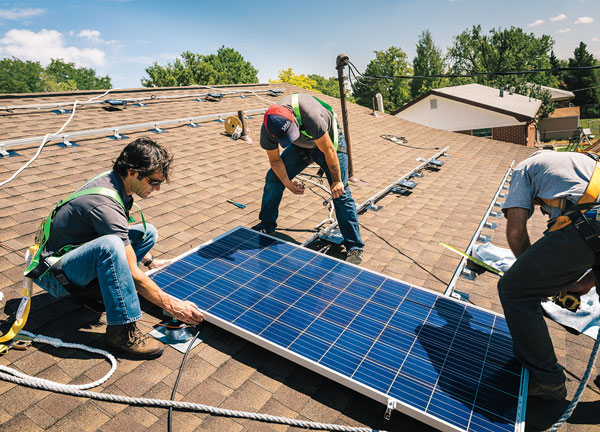
Steps to DIY Solar Panel Installation
Research and Planning
Before starting your DIY solar panel installation, thorough research and planning are essential. This includes understanding the basics of solar energy, studying local regulations and permit requirements, and researching different solar panel types and equipment options. It is also crucial to plan the layout and positioning of the solar panels on your roof to maximize energy production.
Obtaining Necessary Permits and Approvals
Obtaining the required permits and approvals is a critical step in the DIY installation process. This typically involves submitting an application, providing detailed information about your solar system, and complying with local regulations and guidelines. It is important to carefully follow the approval process to ensure a smooth installation and avoid any legal issues.
Designing the Solar System
Designing your DIY solar system involves determining the number of solar panels required, their positioning, and the overall configuration. Factors such as shading, roof orientation, budget, and energy needs will influence the design. It is crucial to ensure that the design maximizes sunlight exposure to optimize energy production.
Selecting and Purchasing Equipment
Choosing the right solar panels, inverters, batteries, mounting hardware, and other necessary equipment is a crucial step in the DIY installation process. Researching different brands, reading customer reviews, and comparing prices will help you make an informed decision. It is essential to ensure that the equipment you choose is compatible with your system design and meets safety and quality standards.
Preparing the Installation Site
Preparing the installation site involves cleaning the roof, ensuring it is free from any debris or obstructions, and inspecting its structural integrity. You may need to make necessary repairs or reinforcements to ensure the roof is capable of safely supporting the weight of the solar panels. Additionally, proper roof sealing and waterproofing measures need to be taken to prevent leaks and damage.
Installation Process and Key Considerations
Mounting Solar Panels
Mounting the solar panels on your roof requires careful planning and precision. This involves properly positioning and aligning the panels, ensuring a secure attachment to the roof, and using the appropriate mounting hardware. Following the manufacturer’s instructions and guidelines is crucial to avoid any damage to the panels and maintain the integrity of the roof.
Wiring and Electrical Connections
Proper wiring and electrical connections are essential for the safe and efficient functioning of your DIY solar system. This includes connecting the solar panels in series or parallel, routing the DC wiring to the inverter, and properly grounding the system. It is vital to follow electrical codes and guidelines to ensure compliance and reduce the risk of electrical hazards.
Inverter and Battery Installation
Installing the inverter and batteries is an important step in the DIY solar panel installation process. The inverter converts the DC power generated by the solar panels into AC power suitable for use in your home. Proper placement, secure mounting, and correct wiring of the inverter and batteries are crucial to ensure optimal efficiency and functionality.
Connecting to the Grid
If you plan to connect your DIY solar system to the grid, you will need to adhere to specific guidelines and procedures provided by your utility company. This includes obtaining approval from the utility company, installing appropriate metering equipment, and following the necessary protocols for grid connection. Compliance with grid connection requirements ensures seamless integration of your solar system with the existing electrical infrastructure.
System Testing and Troubleshooting
Once the installation is complete, thorough testing of the DIY solar system is essential to ensure proper functioning and identify any potential issues. This includes checking the wiring connections, measuring the system’s voltage and current output, and conducting a comprehensive system performance analysis. Troubleshooting any problems and making necessary adjustments will optimize the performance of your solar system.
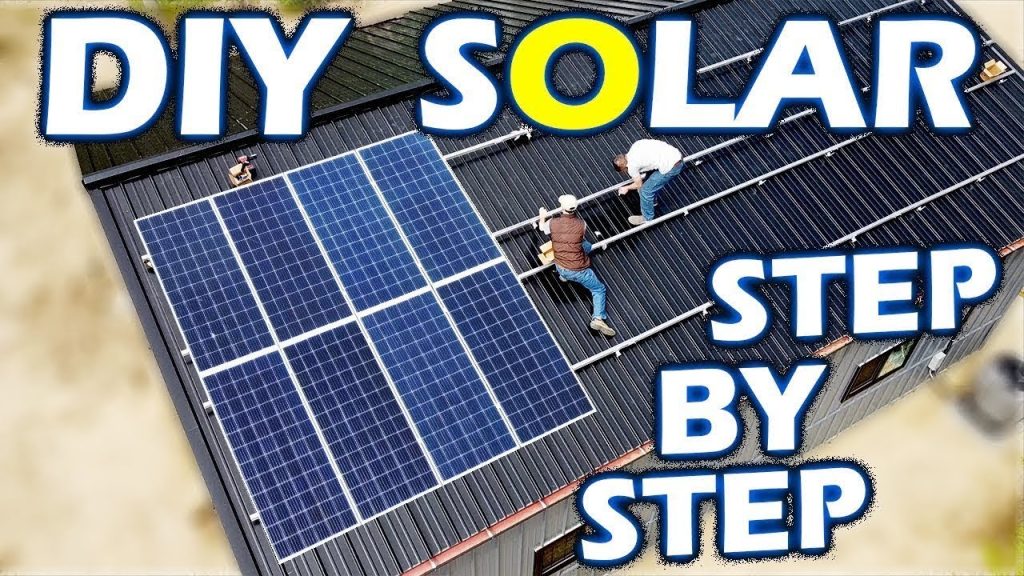
Tools and Equipment
Solar Panels
The primary component of any solar system is the solar panels. When selecting solar panels for your DIY installation, consider factors such as panel efficiency, wattage, warranty, and durability. There are various types of solar panels available, including monocrystalline, polycrystalline, and thin-film panels. Researching different brands and comparing their specifications will help you make an informed decision.
Mounting Hardware
Mounting hardware is necessary to securely attach the solar panels to your roof. This includes mounting brackets, rails, clamps, and fasteners. It is crucial to choose high-quality mounting hardware that is compatible with your roof type and structure. Following the manufacturer’s instructions and guidelines for proper installation is essential to ensure the long-term stability and integrity of the solar panel array.
Electrical Wiring and Connectors
To interconnect the solar panels, inverters, batteries, and other components of your solar system, you will need electrical wiring and connectors. This includes DC cables, connectors, and conduit pipes for routing the wiring. Using high-quality, durable, and appropriately sized wiring and connectors will ensure safe and efficient electrical connections.
Inverter and Batteries
The inverter is an essential component of a solar system as it converts the DC power generated by the solar panels into AC power for household use. When selecting an inverter, consider factors such as efficiency, reliability, size, and features such as monitoring capabilities. If you plan to have a battery backup system, you will need to choose appropriate batteries that can store excess solar energy for later use.
Safety Equipment
Working with electricity and on rooftops poses inherent safety risks. It is crucial to prioritize safety by using appropriate personal protective equipment (PPE) such as gloves, goggles, and hard hats. Additionally, having a fire extinguisher, a first aid kit, and a safety harness for working at heights is recommended. Investing in high-quality safety equipment will protect you and ensure a safe installation process.
Potential Challenges and Limitations
Complexity of the Installation Process
DIY solar panel installation can be a complex process, especially for those without prior experience in electrical work and construction. It requires a good understanding of electrical principles, compliance with local regulations, and accurate system design. Some homeowners may find the installation process overwhelming and may prefer to hire a professional installer.
Electrical and Safety Risks
Working with electricity poses inherent risks if not approached with proper knowledge and caution. Electrical shocks, fires, and electrical system failures are potential risks associated with DIY solar panel installation. It is crucial to educate yourself on electrical safety practices and follow electrical codes and guidelines to minimize these risks.
Warranty and Insurance Considerations
When installing solar panels yourself, it is important to carefully review the warranty terms and conditions provided by the equipment manufacturers. Some warranties may require professional installation to maintain their validity. Additionally, homeowner’s insurance policies may have specific requirements for solar installations that need to be considered before proceeding with a DIY installation.
Grid Connection and Net Metering
Connecting your DIY solar system to the grid may require approval from your utility company. Net metering programs, which allow you to receive credits for excess energy fed back into the grid, may also have specific requirements and limitations. Understanding and complying with the grid connection and net metering regulations in your area is crucial for a successful DIY installation.
System Performance and Maintenance
While DIY solar panel installations can provide significant energy savings, it is essential to understand that the performance and maintenance of the system will be your responsibility. Regular monitoring, cleaning the panels, and maintaining optimal performance may require some effort and time. Being prepared to take on these responsibilities is important to ensure the longevity and efficiency of your DIY solar system.
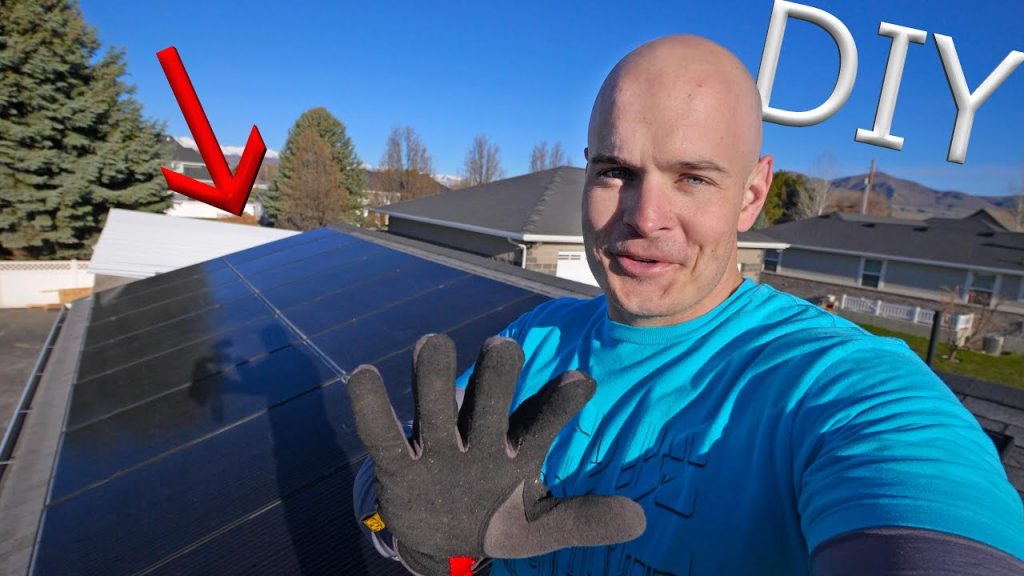
Alternatives to DIY Installation
Professional Solar Installation
If the DIY route seems overwhelming or if you lack the necessary skills and knowledge, hiring a professional solar installation company is a viable alternative. Professional installers have the expertise and experience to design and install solar systems efficiently while ensuring compliance with local regulations. They can provide valuable advice and guidance throughout the process, saving you time and ensuring a high-quality installation.
Community Solar Programs
Community solar programs allow homeowners to access the benefits of solar energy without the physical installation on their own property. These programs involve shared solar arrays located in a central location, and participants receive credits on their utility bills for the energy generated by their share of the system. Joining a community solar program is an alternative to DIY installation that offers the convenience of solar energy without the complexities of system design and installation.
Solar Leasing and Power Purchase Agreements
Solar leasing and power purchase agreements (PPAs) are options that allow homeowners to enjoy the benefits of solar energy without the upfront costs and responsibilities of ownership. With a solar lease, you pay a fixed monthly fee to lease the equipment and benefit from the energy produced. PPAs involve purchasing the energy generated by a solar system at a predetermined rate. Both options provide access to clean, renewable energy without the need for DIY installation.
Solar Co-ops and Group Purchasing
Joining a solar cooperative or participating in a group purchasing program allows homeowners to leverage the collective buying power to secure competitive prices for solar systems. These programs typically facilitate the installation of solar systems by vetted contractors at discounted rates. By joining forces with other homeowners in your community, you can benefit from professional installation and potentially save on the overall costs of going solar.
Financial Considerations
Cost Comparison: DIY vs Professional Installation
A crucial financial consideration when contemplating DIY solar panel installation is comparing the costs of DIY versus professional installation. While DIY installation can be more cost-effective upfront, it is essential to consider factors such as equipment quality, permits, and the potential for costly mistakes or system performance issues. Obtaining quotes from professional installers and analyzing the return on investment (ROI) can help you make an informed decision.
Financial Incentives and Tax Credits
Whether you choose DIY or professional installation, taking advantage of financial incentives and tax credits will significantly impact the overall cost of your solar system. These incentives can include federal, state, and local tax credits, rebates, and grants. Researching and understanding the available financial incentives in your area and incorporating them into your cost calculations will help you determine the true affordability of your DIY installation.
Return on Investment (ROI) Calculation
Calculating the return on investment (ROI) is essential to assess the financial benefits of going solar. This involves considering the upfront costs of the installation, savings on energy bills over time, and the income generated through net metering or other incentive programs. By comparing your initial investment with the expected financial returns, you can determine how long it will take to recoup the costs of your DIY solar system and begin realizing savings.
Financing Options
If you do not have the funds available to cover the upfront costs of your DIY solar installation, there are various financing options to consider. These can include solar loans, home equity loans, or leasing agreements. Exploring different financing options will allow you to find a solution that aligns with your financial situation and enables you to start benefiting from solar energy without a large upfront investment.
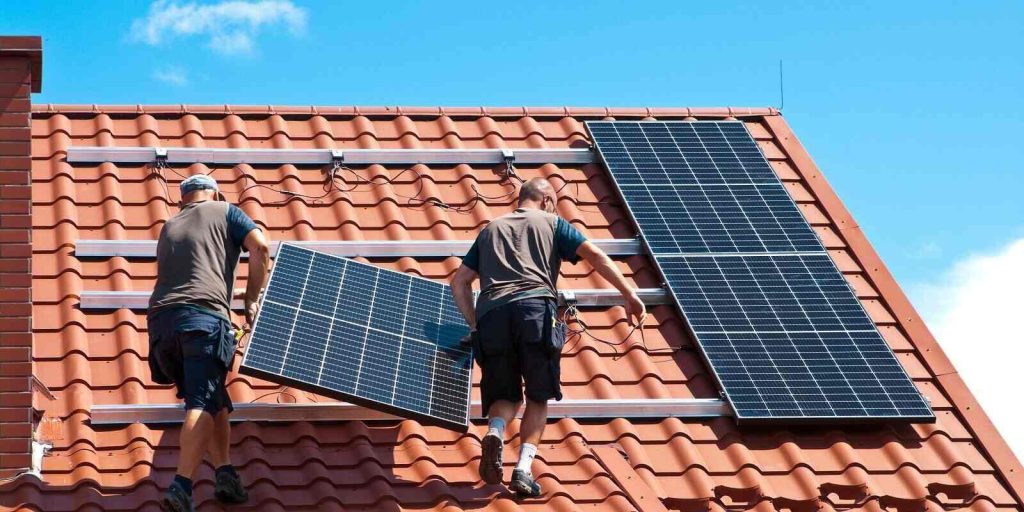
Safety Guidelines for DIY Installers
Proper Equipment Usage and Safety Gear
When undertaking a DIY solar panel installation, it is crucial to use appropriate equipment and safety gear. This includes using insulated tools, a voltage tester, and a multimeter to ensure safe handling of electrical components. Additionally, wearing personal protective equipment (PPE) such as gloves, goggles, and hard hats will protect you from potential hazards.
Understanding and Following Electrical Codes
A solid understanding of electrical codes and guidelines is crucial for a safe and compliant DIY installation. This includes knowledge of proper wiring techniques, grounding requirements, and circuit breaker sizing. Familiarize yourself with the electrical codes relevant to your area and ensure that your installation adheres to these regulations.
Risk Assessment and Protection
Before starting the installation process, conduct a thorough risk assessment. Identify potential hazards and develop a plan to mitigate them. This can include identifying potential electrical shock hazards, ensuring proper organization and labeling of wiring, and implementing measures to protect against falls and other workplace hazards. Minimizing risks and taking necessary precautions is essential to ensure the safety of yourself and others involved in the installation process.
Working with Heights and Roof Safety
Working at heights introduces additional safety considerations during a DIY solar panel installation. It is crucial to have proper fall protection measures in place. This can include using a secure anchor point, wearing a safety harness, and installing temporary guardrails. Understanding and implementing effective roof safety practices will minimize the risk of falls or other accidents during the installation process.
Emergency Preparedness
Being prepared for emergencies is a vital safety measure during any DIY project. This includes having a fire extinguisher readily available in case of electrical fires and ensuring easy access to a first aid kit. It is also recommended to have a safety plan in place that includes emergency contact numbers and evacuation procedures. Being prepared for potential emergencies will help you respond quickly and effectively, reducing the risk of injuries or further damage.
Additional Resources and Support
Online Solar Communities and Forums
Joining online solar communities and forums can provide valuable support and guidance throughout your DIY installation journey. These platforms connect experienced DIY solar installers with beginners and provide a space to ask questions, share insights, and learn from others’ experiences. Engaging with these communities will give you access to a wealth of knowledge, troubleshooting tips, and advice from experienced solar enthusiasts.
Educational Courses and Workshops
For those looking to deepen their knowledge and skills in solar panel installation, educational courses and workshops are available. These resources, often offered by local community colleges, trade schools, or renewable energy organizations, provide comprehensive training on various aspects of solar installation. Participating in these courses will equip you with the necessary expertise to confidently undertake a DIY solar panel installation.
Government and State Programs
Government and state programs can be excellent resources for DIY solar installers. These programs often offer information on local regulations, permitting processes, and financial incentives. Additionally, they may provide resources such as guides, checklists, and online tools to assist with the installation process. Researching government and state programs relevant to your location will ensure you have access to the most up-to-date and accurate information.
Local Solar Installers
While you may be opting for a DIY installation, local solar installers can still provide valuable support and advice. Engaging with local solar professionals can help answer specific questions, provide guidance on system design, and offer recommendations on equipment brands and suppliers. Building a relationship with local installers can be beneficial if you require assistance with any aspect of your DIY installation or for future maintenance and troubleshooting needs.
In conclusion, DIY solar panel installation offers numerous benefits, including cost savings, customization, and the satisfaction of accomplishment. However, it is essential to carefully consider various factors such as skill level, safety risks, and local regulations before deciding to embark on a DIY project. By following the necessary steps and guidelines outlined in this article, you can successfully install a DIY solar system and enjoy the benefits of clean, renewable energy. Remember to prioritize safety, acquire the proper tools and equipment, and leverage additional resources and support available to DIY installers.
